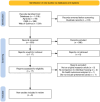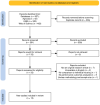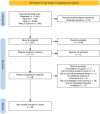A scoping review on pair housing dairy calves: health and performance outcomes and tactics to reduce cross-sucking behavior
- PMID: 40654510
- PMCID: PMC12245681
- DOI: 10.3389/fvets.2025.1568164
A scoping review on pair housing dairy calves: health and performance outcomes and tactics to reduce cross-sucking behavior
Abstract
Calves raised in pairs or triplets often experience better growth performance outcomes when compared to their individually housed peers. However, veterinarians may be concerned that pair housing compromises calf health, and producers are concerned about abnormal oral behavior (e.g., cross-sucking). In this literature review, we evaluated the effect of pair or triplet housing vs. individual housing practices on calf health outcomes and performance since 2016. We also evaluated the literature on mitigation strategies to ameliorate cross-sucking in socially housed calves. We found that when researchers used pair housing practices, there was a lack of association between housing practice and risk of bovine respiratory disease (BRD) status in all studies (100%, 7/7). Only one study lacking healthy control calves found a negative effect on calf diarrhea in week 3 (1/8 studies). However, a moderate number of researchers (57%, 4/7) did not use a validated clinical scoring system to diagnose calves with BRD status. Half of the researchers (50%, 4/8) also did not report their diagnostic criteria for diagnosing diarrhea in their calves, and we suggest this is needed for future work. All researchers who fed calves at least 7 L/d of milk and recorded calf starter intakes found that pair-housed calves consumed more calf starter either preweaning or post-weaning (100% 6/6). However, growth benefits were only observed in 4 studies, in which 75% fed calves at least 7 L/d of milk. Cross-sucking is mitigated by providing socially housed calves with an outlet for oral behavior, such as a teat for milk feeding, offering at least 7 L/d of milk, offering a teat with starter, and forage. We recommend that future studies investigating social housing utilize validated clinical scoring systems for calf health monitoring, report disease diagnostic criteria, and feed ≥ 7 L/d of milk to promote performance benefits in pair-housed calves. More research is needed to understand how cross-sucking develops as a habit in socially housed calves.
Keywords: animal welfare; bovine respiratory disease; calf; diarrhea; social housing; validated clinical scoring.
Copyright © 2025 Plaugher and Cantor.
Conflict of interest statement
The authors declare that the research was conducted in the absence of any commercial or financial relationships that could be construed as a potential conflict of interest.
Figures



References
Publication types
LinkOut - more resources
Full Text Sources
Research Materials

